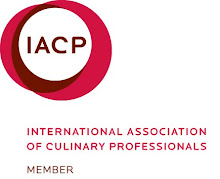
I started saving all my wine bottle corks in big glass bottles a few years ago. I love to look at them as each one recalls a pleasant memory of a bottle of wine shared with friends and family. No two are alike and they all are stamped with the name of the winery they came from.
I'm always vaguely displeased when I open a bottle of wine and find a plastic cork, or rather, bottle stopper. It seems to be in contradiction with how I view wine: a natural, earthy pleasure of life. And sustainable.
Over the past few months a weekly Italian magazine I read has been featuring full page ads in favor of using cork bottle stoppers. The ads point out the centuries old relationship between wine and cork and that cork protects flavor, nature and tradition. It makes sense to me. The ad is sponsored by a host of Mediterranean and EC cork producers and organizations.
I also just spent a few days on the magical island of Corsica. While there we drove by a number of cork groves which, if my husband hadn't known what they were and pointed them out, I'd have had no idea what they were.
I've done a little research on cork and it turns out that almost all cork is grown and produced in the Mediterranean: 52.5% in Portugal, 29.5% in Spain, and 5.5% in Italy, followed by Algeria, Marocco, Tunisia and France. Seventy percent of cork production is used for bottle stoppers and here in Italy our 5.5% of production translates to 1.5 billion bottle corks per year. Not surprisingly 70% of Italy's cork groves are in Sardegna, the island neighboring Corsica where I saw my first cork tree this summer. All the rest of Italy's cork groves are spread out across the regions of Sicily, Calabria, Lazio, Tuscany and Campania. I definitely plan to visit a local Lazio cork grove....once I find out where one is!
It turns out that cork production satisfies almost fully the demands of the wine bottle stopper industry. So why plastic corks? There is a small percentage of wine that goes bad due to cork taint (something like 1 - 15%) and plastic, of course, doesn't have this problem. On the other hand any bottle of wine which has gone bad due to cork taint will always be taken back. On the positive side cork ages better than plastic and also allows for some air exchange during the aging process, which is fundamental for a good wine.
In addition, cork grove forests, according to the coordinator of the WWF's Cork Oak Landscapes program, "rank among the top biodiversity hotspots in the Mediterranean and in Europe. At the same time, they are the backbone of an entire economy". And they're beautiful.
Cork oaks can live hundreds of years, making cork bottle stopper production a fully sustainable process.
So what's the bottom line? As consumers we need to do our part to help the environment by choosing wines with natural cork stoppers. And, let's face it, there's nothing like opening a good bottle of wine that has a natural cork!
In this Corsican cork grove the trees have just recently been debarked, and the cork bark is stacked off to the side to dry out.

This recently debarked tree, allows you to see just how thick and textured cork bark really is.

These trees were debarked quite awhile ago and have taken on the grey-black look of the rest of the bark.






